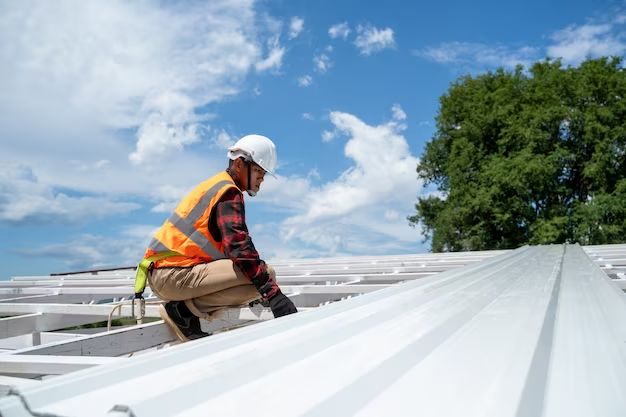Roofing issues in commercial buildings often differ from those found in residential properties this is due to a variety of factors including maintenance, products, use and abuse and climate.
Commercial roofs should not be left unattended for long identifying minor problems early on can extend the life expectancy of your roof and save you money the most troublesome issues in commercial roofing on tri county blogs from leaks to maintenance we’ve got you covered.
1. Leaks
One of the most troublesome commercial roofing issues is a leak it can cause many problems for a business including mold and mildew, structural damage, drywall and flooring damage, health concerns, fire hazards and loss of inventory or sales.
Commercial roof leaks often stem from poor drainage, resulting in rainwater collecting on the roof this can be caused by gutters, drains, scuppers, and downspouts that aren’t working properly or roof penetrations that aren’t properly sealed.
Leaks can also result from damaged or aging roof flashing these metal pieces line the roof’s conjoining areas like skylights and chimneys, protecting them from rainwater, snow melt and outdoor elements.
2. Debris
Debris that builds up on a roof is more than just an eyesore. It also causes structural problems and safety hazards. In a commercial setting, injuries can cost the facility major costs in lost productivity and repairs.
Debris often consists of twigs, branches, leaves, pine needles, and other environmental debris. These items can easily damage the surface of the roof and cause dents or tearing. They can also trap water on the roof and rot the structure.
It’s crucial to clear debris from the roof this is done to ensure the proper flow of water and to avoid clogged gutters and drainpipes. Clogged gutters and drainage systems can lead to ponding on the roof, which damages the surface and promotes mold growth. This can lead to leaking walls, facades, and other building components.
3. Corrosion
Corrosion is a common problem for metal roofing. This process is the deterioration of metal components, such as fasteners and roofing materials, due to chemical reactions that are typically electro-chemical in nature.
The most common form of corrosion is the galvanic corrosion that can occur when dissimilar metals come into contact. It can also happen when water containing copper salts from plumbing or HVAC equipment drains onto a galvalume roof or sheathing.
Another issue is a phenomenon known as crevice corrosion, which happens when the cut edge of metal roofing sheets becomes exposed to weather conditions and is not sealed properly during installation this can lead to leaks and other problems. To avoid this issue, ensure the cut edges are crisp and have no jagged or rough surface.
4. Mechanical Damage
Whether it’s caused by foot traffic, unauthorized access or faulty tools, mechanical damage to commercial roof surfaces can cause leaks, reduce lifespan and lead to unwanted consequences for building occupants. Signs of this type of damage include stains, puddling water and foul odors.
Look for damage to the flashing and membrane. This includes punctured areas that need repair immediately. It’s also a good idea to keep an eye out for open penetrations like pipes, vents and skylights as well as damaged or missing roof components like scuppers and drains.
Heavy snow accumulation can exceed a commercial roof’s load-bearing capacity and result in structural damage. In addition, ice dams can prevent melting snow from properly draining and contribute to interior water damage. Keeping a close eye on energy bills, observing signs of moisture and restricting roof access will help reduce the likelihood of these types of issues.
5. Lack of Maintenance
When commercial property owners skip routine inspections they risk a long list of problems. This can be anything from structural damage, water leaks to a roof collapse.
Even the most durable roofing materials will deteriorate with time without proper care. This is why regular maintenance is so important. A qualified professional will be able to identify any potential issues and make repairs as needed before they turn into expensive headaches.
Scheduled inspections should include chimneys, vents, skylights and any mechanical equipment that is on the roof. It is also a good idea to check for clogged drains, mildew and mold, moss growth, watermarks, rusting and damaged flashings. Lastly, overhanging tree branches and fallen limbs should be trimmed to avoid impact damage. These issues can lead to business interruption, a poor image and costly repairs.
